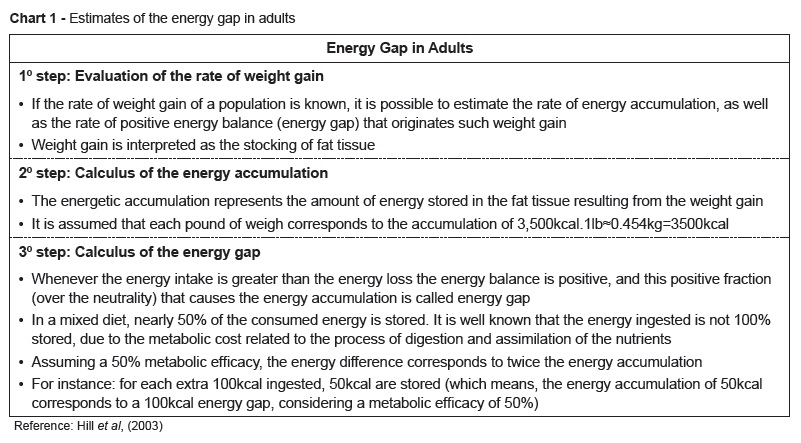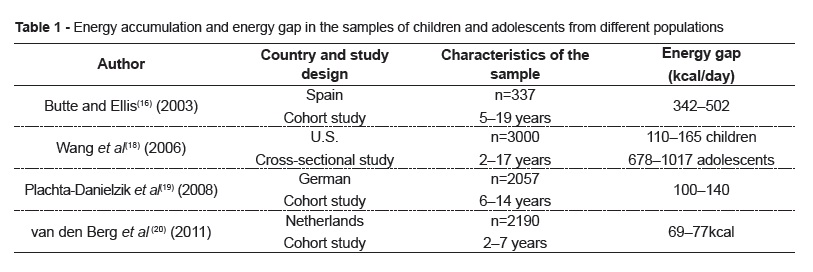OBJECTIVE: To review the main articles on energy imbalance and obesity in order to quantify the daily energy surplus associated with weight gain in children and adolescents. DATA SOURCES: Articles published in the last ten years, indexed in electronic databases Medline (Pubmed) and SciELO-Br. In the Medline database, the descriptor "energy gap" was used and describes the energy values associated with changes in body weight in individuals or populations. In SciELO-Br database, the descriptors "obesity", "energy metabolism", "energy balance", and "energy imbalance" were used, once it was not possible to find national articles discussing the energy gap. DATA SYNTHESIS: In the pediatric population, four studies were performed and indicate that children and adolescents are gradually gaining weight due to a small, but persistent, daily positive energy balance of 70 to 160kcal above the total energy suitable for growth. The results suggest that small changes in daily eating behavior as well as physical activity would be enough to prevent future weight gain in this population. CONCLUSIONS: gradual weight gain can be explained by small daily average of positive energy balance, from 70 to 160kcal above the total energy suitable for growth. The incentive to small changes in eating behavior and physical activities that promotes daily reduction of 160kcal can be an accessible practice in order to block weight gain in this population.
obesity; child; adolescent; energy metabolism; energy intake; weight gain


